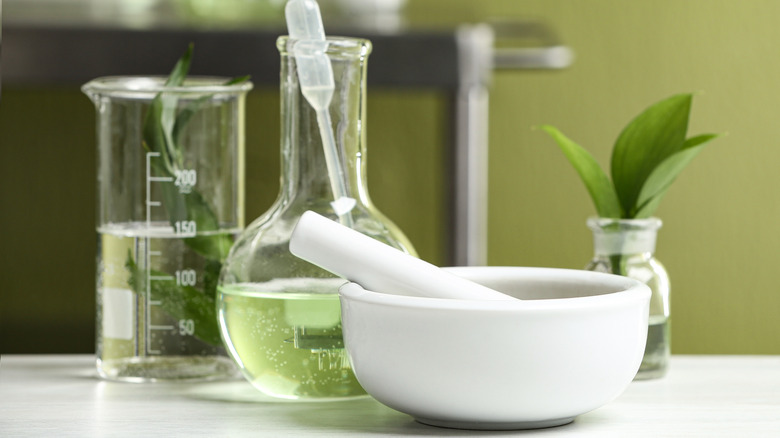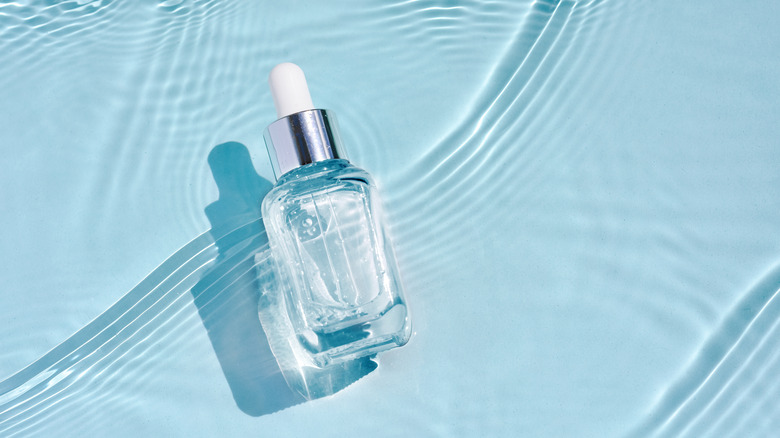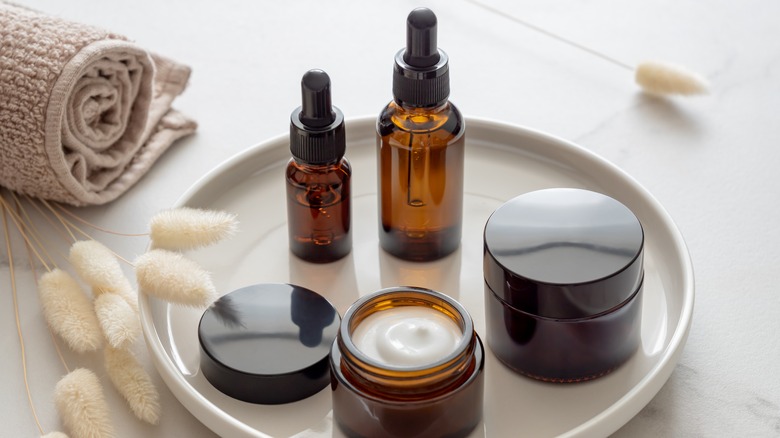A Higher Percentage Of Active Skincare Ingredients Isn't Always Best. Here's Why
In a world where we are constantly encouraged to do more and buy more, we may be tempted to have an extensive, 10-step skincare routine. Acne breakouts make us willing to try anything for clear, glowing skin, but at what cost? Rather than only listening to marketing, we should be paying attention to that ingredient label.
When we buy a cleanser, serum, or cream, we usually buy it for its active ingredients, which tell us what each one will do for our skin. It's easy to think, "Well, if there's a high percentage of this ingredient, it will work the best." However, this isn't always the case. Before piling on heavy products, it's a good idea to read the product label and learn how much of each ingredient you are really using. If you're not getting the results you want, you may be using too much. Here's where the saying, "Everything in moderation," is especially relevant — it can help you avoid damage to your skin and your wallet.
Less is more
As it turns out, the ideal range for an active ingredient like salicylic acid or hyaluronic acid is between 1% and 2%. When it comes to skincare, high concentration percentages do not always mean better results. A 2011 study published in the Journal of Drugs in Dermatology indicated that even at just 0.1%, hyaluronic acid was effective at improving skin's hydration, but most products contain between 1% and 2% of this ingredient. Another popular active ingredient is L-ascorbic acid, the synthetically produced form of vitamin C commonly used in serums. This ingredient aims to brighten skin and promote collagen production, and it is most effective at up to 20%. Anything over 20% could lead to irritation, as L-ascorbic acid can be a bit too strong on sensitive skin.
Anti-aging products are continuously on the rise as well — particularly retinol creams. Using retinol, a form of vitamin A, helps reverse sun damage and signs of aging. Dr. Heather Rogers, a board-certified dermatologist, told Modern Dermatology that using products with a 0.25% to 1% concentration of retinol is best. All you need is a pea-sized amount on the forehead, cheeks, and chin. Too much retinol can leave the skin feeling burned and flaky. "When overusing active ingredients or constantly changing formulas, your epidermal barrier function becomes impaired and too much water evaporates from the skin, causing a lowered water content in the [outermost layer of the skin]," Alexis Granite, consultant dermatologist for CeraVe, told Women's Health.
How to choose effective products
Chances are, you may be paying for a product that contains a higher percentage of an acid or vitamin that won't actually give you the results you desire. If you're curious about trying out an ingredient for a specific skin need, do your research before buying. Each ingredient has a specific range of effectiveness, and the U.S. Food and Drug Administration requires all cosmetic product manufacturers to list their ingredients on the package.
When reading the ingredient label, you'll want to steer clear of products that contain sulfates, essential oils, fragrances, or dyes, according to The Detox Market — all of these can cause irritation and allergic reactions. Pay attention to how often you should be using active ingredients as well. Not using a product as recommended can do more harm than good. It's also important not to buy into the hype around certain products. Skincare is a very individual thing, and just because something works for your favorite celebrity doesn't mean it will work for you. Your skin may appreciate a minimalist skincare routine rather than overdoing it with your active ingredients.


